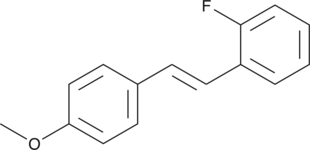Description
A non-selective β-AR antagonist; binds to primary rabbit iris and ciliary body homogenates (Ki = 34 nM); inhibits isoproterenol-induced relaxation in guinea pig atrium and fenoterol-induced relaxation in rat uterus (pA2s = 8.3 and 8.4, respectively); inhibits anoxia-induced cell death in primary rat retinal cells and sodium nitroprusside-induced lipid peroxidation in rat primary retinal homogenates (100 μM); decreases α-chymotrypsin-induced increases in IOP in rabbits when administered topically to the eye at a dose of 0.3%; inhibits the blinking response to ocular tactile stimulation in rabbits when administered topically to the eye at a dose of 0.6%
Formal name: 4-[2-hydroxy-3-[(1-methylethyl)amino]propoxy]-2,3,6-trimethyl-phenol, 1-acetate, monohydrochloride
Synonyms:
Molecular weight: 345.9
CAS: 36592-77-5
Purity: ≥98%
Formulation: A crystalline solid
Product Type|Biochemicals|Receptor Pharmacology|Antagonists||Research Area|Neuroscience|Ophthalmology




